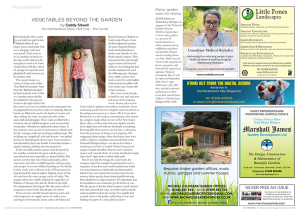
I found myself with a carrot in our bath the night before Melplash Show. It was longer than a small child. This was a whopper, and I was very proud. There were to be no scratches or breaks to the skin, so the bath was the best place to wash it in. Once stroked clean with the softest of sponges its tiny hairs were plucked off with tweezers on the kitchen table.
This orange beauty is a variety of long carrot called ‘New Red Intermediate’ bred from the ‘Red Intermediate’ by Suttons Seeds in the 1950s as a ‘novelty carrot suitable for exhibition’. Having your hands on the right seeds is the first step if you want to embark on this carrot game but be prepared for twenty-four weeks of nurturing. Massive barrels are filled with sand in the depths of winter and after settling, five holes are cored out with a three-and-a-half-inch drainpipe.
These voids are filled with a nutritious mix of riddled compost, sand, seaweed and vermiculite—blended in a dedicated cement mixer. A few seeds are sown on top of each station in March with the five strongest and most matching seedlings kept. The weaklings are snipped off with nail scissors—not pulled, for fear of disturbing the chosen ones. Your summer is now dictated by these tiny fronds. Carrots like routine—regular watering, stroking and encouragement.
In the sixteenth century carrots were distained by the wealthy as food for the poor and the poor in turn dismissed root vegetables as animal fodder. The carrots in those days were black and purple, yellow and cream and often muddled together with parsnips and turnips. It was the brilliant breeding of the Dutch, in their sandy soils in Hoorn in the 17th century, that transformed the ancient yellow Afghani carrot of the silk road into the sweet orange carrot of today. The orange colour was swiftly adopted by supporters of William of Orange who led the Dutch in the fight for independence from Spain. But the carrot and it’s orangeness came before him despite the myths.
There are now over 600 named culinary carrots and seed companies can supply carrots of endless sizes and shapes with romantic names such as St Valery and Royal Chantenay, Oxheart or Early Scarlet Hoorn. From the late eighteenth century, the green-fingered Shakers bred and distributed new strains over America via the Shaker Seed Company. They focussed on the carrot’s high sugar content and biennial ability to store during the lean months and plant for seed the following year. Amongst many edible varieties they bred a carrot for cattle fodder which produced golden milk to be made into a butter rich in beta carotene.
The show carrot though, is bred for size and skin tone and never feels tempting to eat. Season after season I have tried to improve but without much luck. From reselecting seeds from the straightest and smoothest to hounding carrot growers at shows. Mr J. Croot from Derbyshire is a tremendous carrot grower who shared his compost recipe when we met at the New Forest Show. (But as with good cooks you slightly wonder if he might have not told me absolutely everything). Growing 200 show carrots was for him, a relaxation from the pressures of being a train engineer. His staggering, deep orange, three-foot lances have won endless trophies, including second and third at the National Championships—no mean feat when a matching set of five is needed. Perfect long carrots require shapely shoulders that have not started to ‘green’ and ‘smooth shafts of evenly distributed weight and colour’ right down to their whip ends.
But it’s not only the timing, the saved seeds, the compost recipe but crucially the getting them out in one piece. In my first year I used a circular saw which was very dangerous, ended badly and destroyed the barrel. I have now learnt that you run a hose for ten minutes before gently, almost imperceptibly twisting them clockwise in surgeon’s gloves. Yet impatience and hot headedness can sometimes get the better of you. Oh, the agony of the day when it comes to pull and you hear that unmistakable snap. A terrible wail is emitted, understandable to all in the vicinity. You rapidly find yourself alone in the garden, ankle deep in wet sand holding two parts of a once glorious carrot.



